Project Acer Aspire One
|
Purpose The purpose of this tutorial is to demonstrate how I changed my Acer Aspire One Netbook (a mere $250USD when I purchased it) to push it beyond the factory defaults such as expanding the integrated graphics card memory from 8MB to 224MB and expanding drive storage from the default 16GB (8GB SSD + 8GB SDHC card) to 40GB. You can go as high as 72GB not including what you may plug into one of the three USB 2.0 slots. 72GB is the limit because the SDHC standard only supports 32GB for a single SDHC module (SDXC, a new standard coming out in 2010, will support up to 2 Terabytes). Then I'll cover a set of applications and games that actually run on the Acer Aspire One Netbook as well as a few that don't will be shown. The applications and games are not an exhaustive list by any means but can give you an idea of what the Acer Aspire One Netbook can handle. And to wrap up, I'll go into setting up a limited account (for surfing), securing the Guest Account and changing mobile power settings. NOTE: A review of the Alienware M11XR2 netbook has been done and you can check it out here when you're done with this review. |
| ACER ASPIRE ONE NETBOOK (BEFORE) Type: AOA 110-1137 Model: ZG5 CPU: Intel Atom N270 Processor (1.6Ghz) RAM: 1GB DDR2 LCD: 8.9" CrystalBrite WSVGA (1024 x 600 True Color; refresh rate 60Hz) Integrated Intel Video Card: 8MB Memory Storage: 16GB (8GB SSD and 8GB SDHC module) Card Reader: Multi-in-one card reader LAN: 10/100 base T (basically an ethernet card) Wireless: 802.11 b/g OS: Windows XP Home, Service Pack 3 System BD/BIOS: 36/3305 System Bios Version: v0.3305 VGA Bios Version: Intel V1585 Boot Capability: IDE0 (SSD), IDE1, USB FDD, USB HDD, Network Boot, USB CDROM Webcam: Integrated Microphone: Integrated Speakers: Integrated Battery: 3-cell; roughly 2 hours of run time |
ACER ASPIRE ONE NETBOOK (AFTER) Type: AOA 110-1137 Model: ZG5 CPU: Intel Atom N270 Processor (1.6Ghz) RAM: 1GB DDR2 LCD: 8.9" CrystalBrite WSVGA (1024 x 600 True Color; refresh rate 60Hz) Integrated Intel Video Card: 224MB Memory Storage: 24GB (8GB SSD and 16GB SDHC module). Note: I replaced the 8GB SDHC module with a 16GB SDHC module; 32GB SDHC is the max Card Reader: Multi-in-one card reader (placed 16GB SDHC module in that slot; 32GB SDHC is the max) LAN: 10/100 base T (basically an ethernet card) Wireless: 802.11 b/g OS: Windows XP Home, Service Pack 3 System BD/BIOS: 36/3305 System Bios Version: v0.3305 VGA Bios Version: Intel V1585 Boot Capability: IDE0 (SSD), IDE1, USB FDD, USB HDD, Network Boot, USB CDROM Webcam: Integrated Microphone: Integrated Speakers: Integrated Battery: 6-cell; roughly 5 hours of run time |
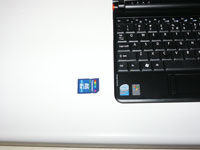 (Enlarge) |
|
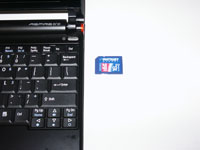 (Enlarge) |
|
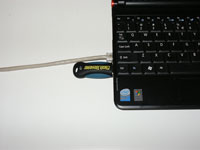 (Enlarge) |
|
|
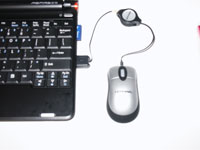 (Enlarge) |
|
|
|
|
|
|
|
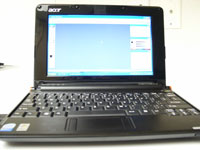 (Enlarge) |
|
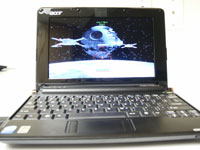 (Enlarge) |
|
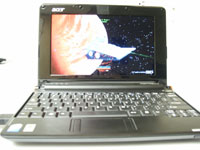 (Enlarge) |
|
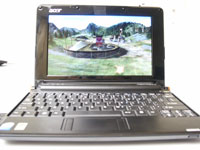 (Enlarge) |
|
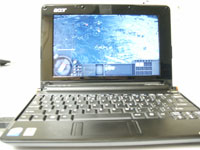 (Enlarge) |
|
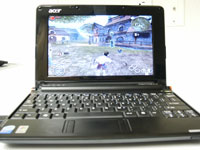 (Enlarge) |
|
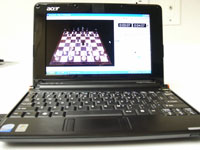 (Enlarge) |
|
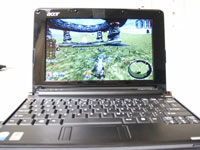 (Enlarge) |
|
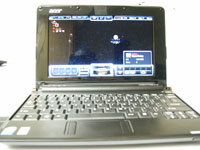 (Enlarge) |
|
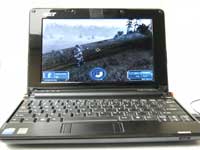 (Enlarge) |
|
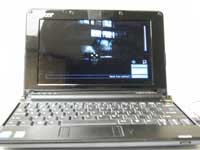 (Enlarge) |
|
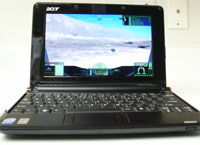 (Enlarge) |
|
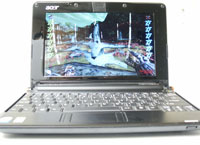 (Enlarge) |
|
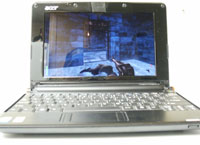 (Enlarge) |
|
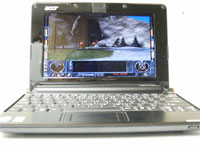 (Enlarge) |
|
|
|
|
|
|
|
|
|
|
|
|
|
|
|
|
|
|
|
|
|